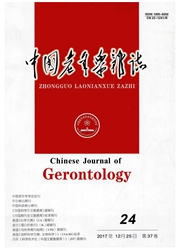

 中文摘要:
中文摘要:
目的探讨后处理对短暂性脑缺血后脑损伤及氧化应激性蛋白质损伤的影响。方法大鼠MCAO局灶脑缺血再灌注模型,分为假手术组,缺血组及后处理组。缺血后处理方法为缺血结束后恢复脑血流30 s再阻断30 s为1个循环,共3个循环。采用TTC染色计算梗死脑组织的体积。差速离心法分离线粒体。荧光测定法检测线粒体内过氧化氢含量。分光光度计法检测蛋白质氧化产物羰基化合物含量。结果缺血后处理显著降低了局灶脑缺血后脑梗死的体积;线粒体内过氧化氢的含量显著降低;蛋白质氧化产物羰基化合物的含量显著降低。结论缺血后处理能够通过降低氧化应激性蛋白质损伤保护缺血再灌注所致的脑损伤。
 英文摘要:
英文摘要:
Objective To investigate the effects of ischemic post-conditioning on brain injury induced by transient ischemia and reperfusion and protein damage due to oxidative stress. Methods Transient ischemia and reperfusion was established by rat middle cerebral artery occlusion(MCAO) model. All the rats were divided into sham-operated, ischemia and ischemic post-conditioning groups. Ischemic post-conditioning rats were subjected to 3 cycles of 30 s/30 s reperfusion/re-occlusion after 2 h of ischemia. The volume of the infarct brain was measured by Trc. Mitochondria was isolated via differential centrifuge. F]uoremetry was used to assay the content of hydrogen dioxides. Spectrophotometer was used to measure the quantity of the products of protein oxidization. Results The infarct volume of the damaged brain was caused by transient ischemia, the content of hydrogen dioxide and carboxyl products of protein oxidation were all decreased significantly by ischemic post-conditioning. Conclusions Ischemic post-conditioning prote.cts the damaged brain tissue caused by transient ischemia via reducing oxidative stress induced protein oxidation.
 同期刊论文项目
同期刊论文项目
 同项目期刊论文
同项目期刊论文
 期刊信息
期刊信息
